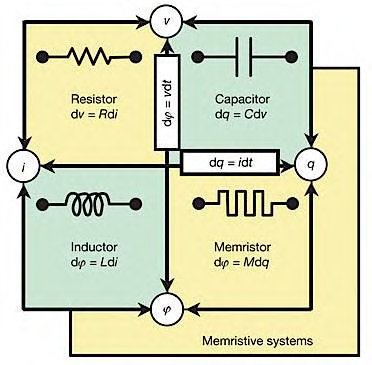Storage: the next generation

A new memory technology could replace DRAM and NAND flash: fast and non-volatile. With a feature size of 4nm it is also several generations ahead of both. Is it real?
The memristor HP is investing tens of millions in finding out. A team of some 100 scientists and engineers are working on it - and it is a safe bet that other memory vendors are working on it too.
The memristor is a passive component - like a capacitor or a resistor - with unique properties: it's resistance varies with the the direction of electrical flow and it retains its level of resistance after the power is shut off! For years. Perfect for storing 1s and 0s.
Here is where it fits compared to other passive electrical components:

Will it fly? Tech is great, but unless vendors can make it pay you'll never see it. Memristors have what it takes to succeed in our capitalist jungle.
- They can be built on today's semiconductor lines. The chemistry is a little different but well within what we can do today.
- A single memristor can replace multiple transistors, reducing cost, power and size.
- 4nm feature size is a fraction of today's leading edge 28nm processes.
Item 3 is key. Many lab technologies offer 2-4x advantages over current products, but with 40% annual density improvements that is only a 2-4 year advantage.
Once it takes 3 years to build a commercial version the new tech is down to a fractional improvement. Everyone knows the thing they already know how to use will be there in another year, so they don't move. And new tech dies.
But a 4nm feature size is a 10 year lead over flash and DRAM and probably more. That gives memristors enough time to overcome schedule slips and still be more than competitive. HP has a team moving memristors from the lab to factory.
The Storage Bits take Given that NAND flash took 25 years to reach the tipping point, skeptics - like me - will want proof that this technology is as great as it seems. For example, what is the service life of a memristor?
But looking at it from a economic perspective, this is the most exciting technology I've seen in years. It has the fundamental advantages it needs to win.
Stay tuned for more on memristive technology on Storage Bits.
Comments welcome, of course. Great technical intro in this IEEE Spectrum article.